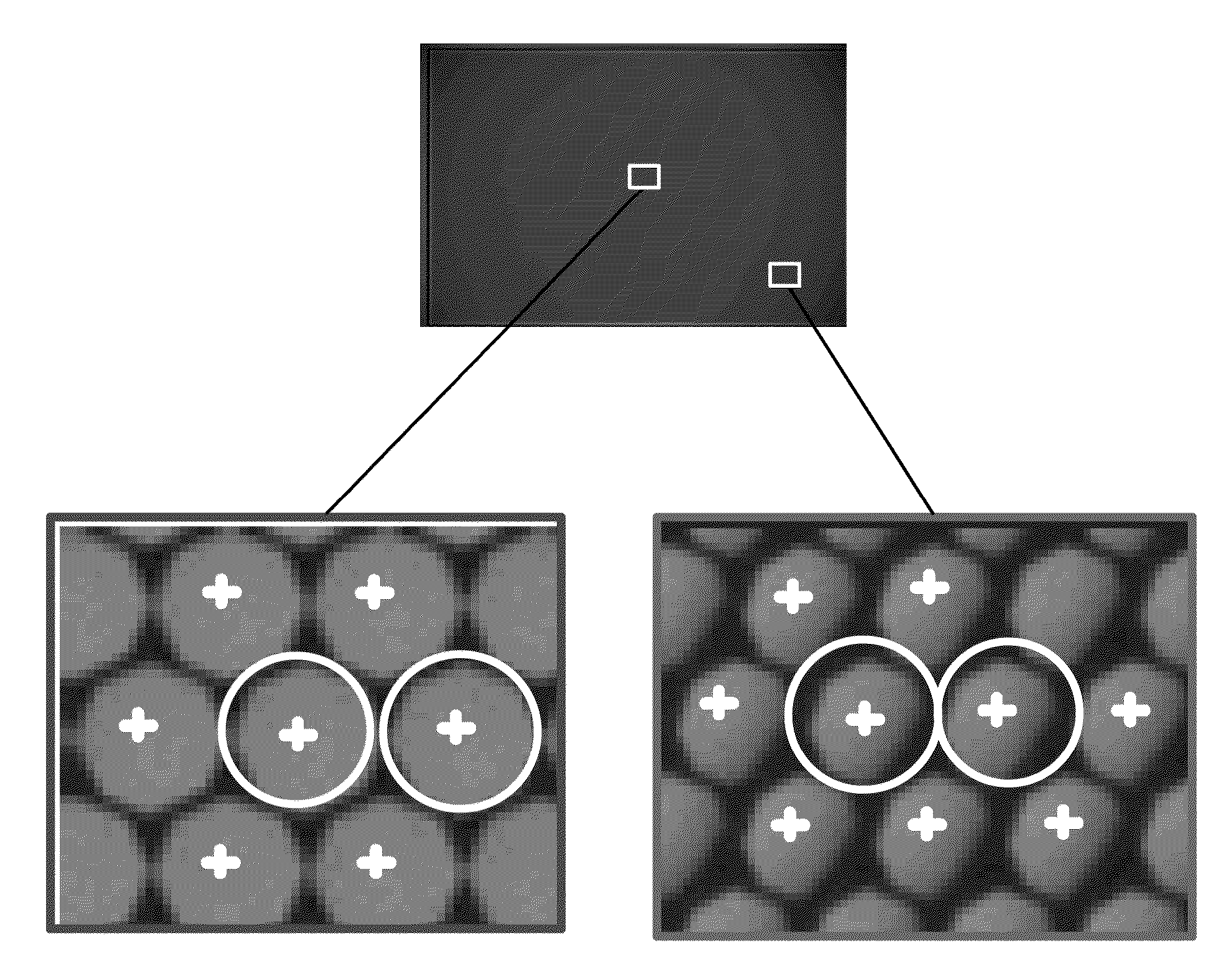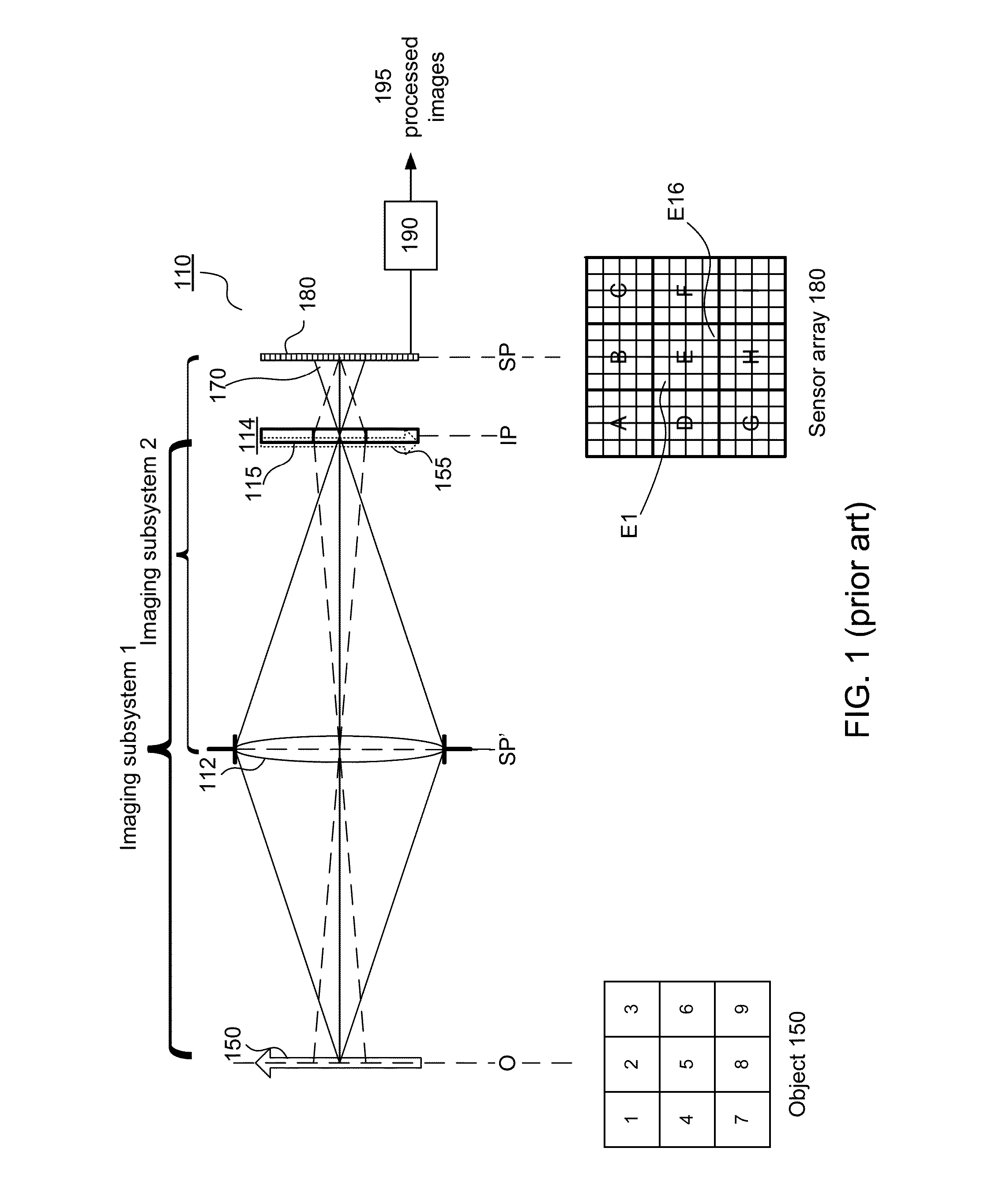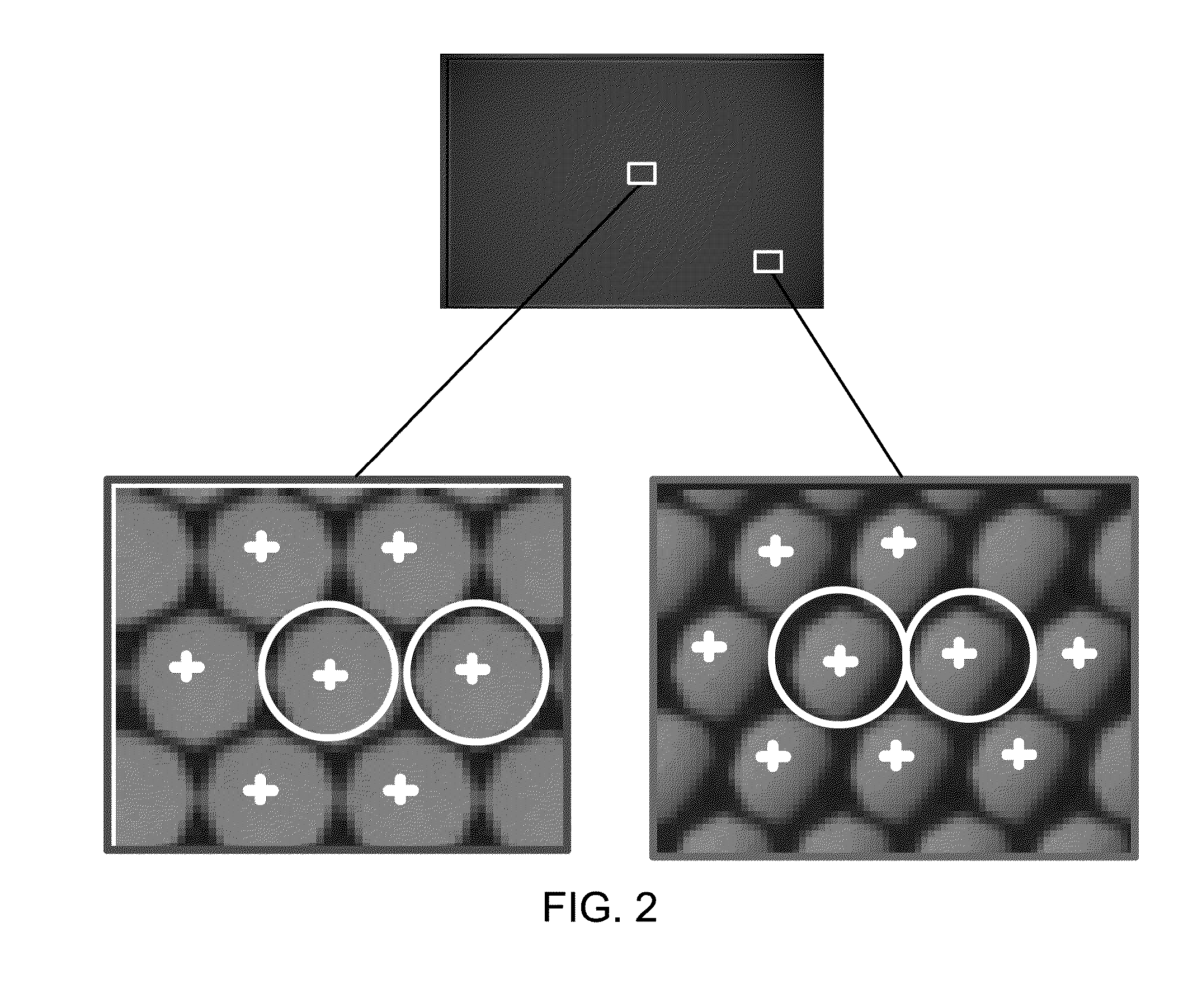Object Space Calibration of Plenoptic Imaging Systems
a plenoptic imaging and object space technology, applied in the field of plenoptic imaging system calibration, can solve the problems of different plenoptic imaging system architecture, different calibration and processing procedures, and and achieve the effect of improving the processing of plenoptic images
- Summary
- Abstract
- Description
- Claims
- Application Information
AI Technical Summary
Benefits of technology
Problems solved by technology
Method used
Image
Examples
Embodiment Construction
[0026]The figures and the following description relate to preferred embodiments by way of illustration only. It should be noted that from the following discussion, alternative embodiments of the structures and methods disclosed herein will be readily recognized as viable alternatives that may be employed without departing from the principles of what is claimed.
[0027]Various embodiments overcome the limitations of the prior art by calibrating a plenoptic imaging system by controlling the propagation directions of light in object space. An object is adjustable to deliver collimated light propagating along different propagation directions, and possibly also from different lateral locations in the object plane if desired.
[0028]One implementation uses collimated light reflected from a mirror in the object plane. The light beam is wide enough to fill the aperture of the primary lens. The propagation direction of the light beam can be controlled by tilting the mirror. By collecting plenopt...
PUM
 Login to View More
Login to View More Abstract
Description
Claims
Application Information
 Login to View More
Login to View More - R&D
- Intellectual Property
- Life Sciences
- Materials
- Tech Scout
- Unparalleled Data Quality
- Higher Quality Content
- 60% Fewer Hallucinations
Browse by: Latest US Patents, China's latest patents, Technical Efficacy Thesaurus, Application Domain, Technology Topic, Popular Technical Reports.
© 2025 PatSnap. All rights reserved.Legal|Privacy policy|Modern Slavery Act Transparency Statement|Sitemap|About US| Contact US: help@patsnap.com



